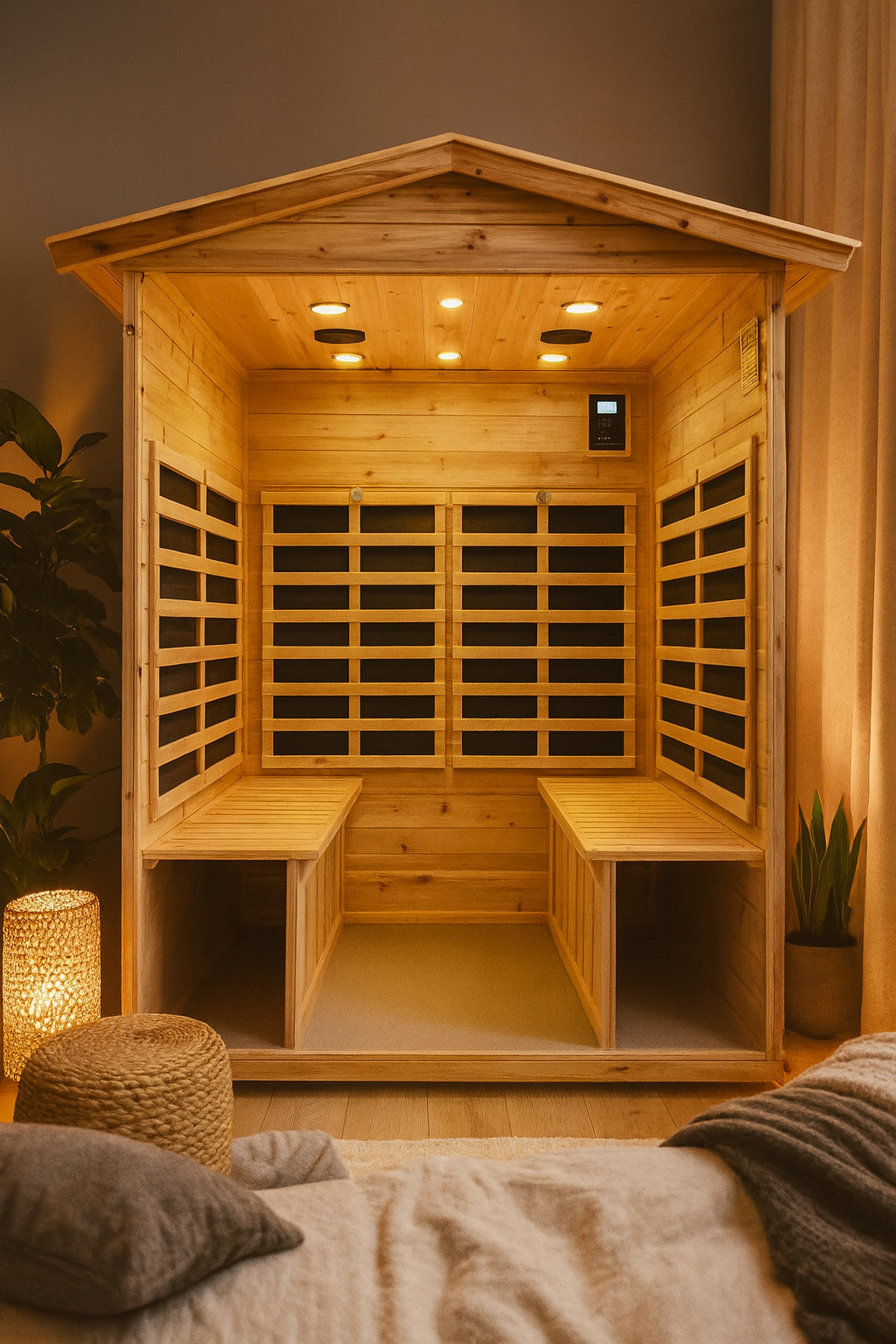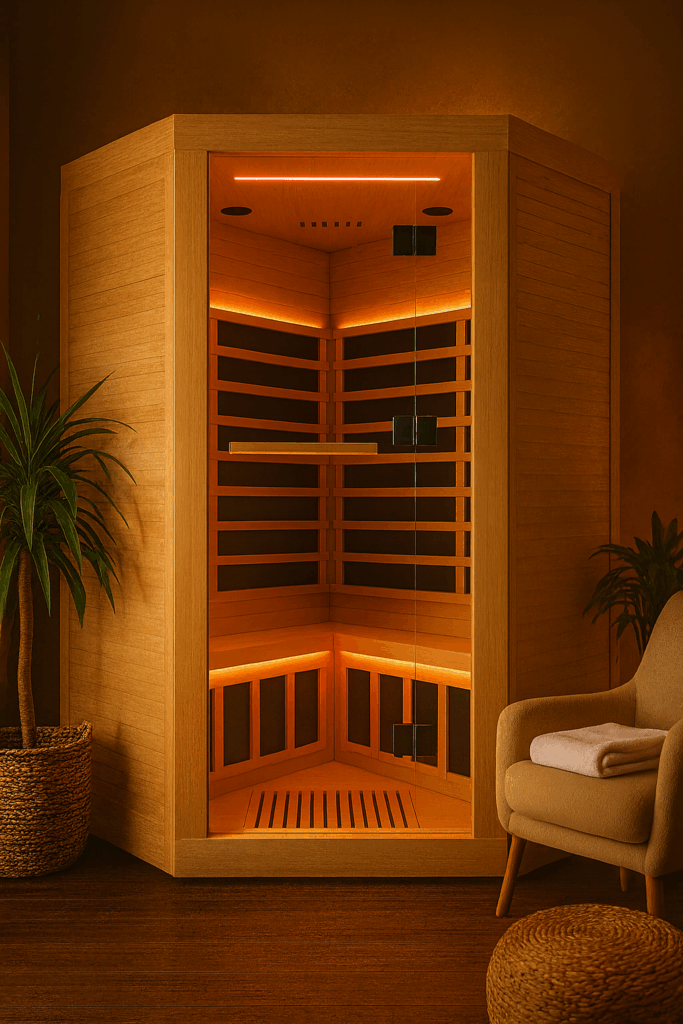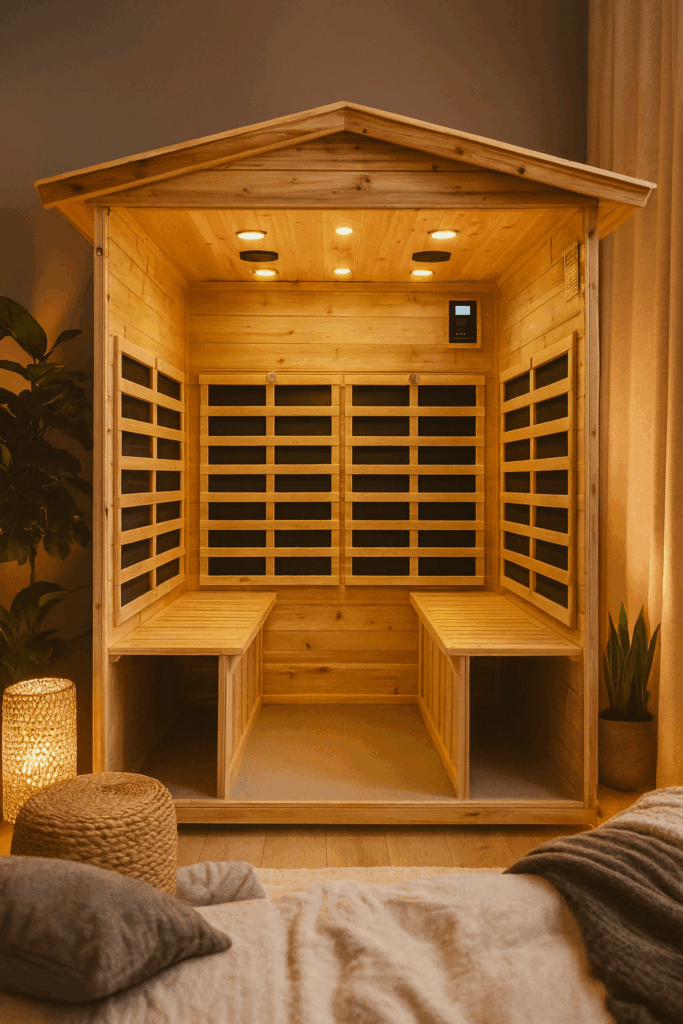Search

Infrared saunas have taken the wellness world by storm. Unlike traditional saunas that heat the air around you, infrared saunas use light waves to warm your body directly. The result? A gentler, more efficient experience that offers a surprising number of health benefits. Whether you’re looking to ease muscle tension, support detoxification, or simply carve out a pocket of calm in a busy week, infrared saunas might just be your secret weapon.
Let’s explore the benefits, the science behind them, and a few fun facts that might make you rethink your relationship with heat.
A traditional sauna can reach temperatures between 70–100°C (158–212°F), heating the air around you. Infrared saunas, on the other hand, operate at lower temperatures—45–65°C (113–149°F)—but penetrate the skin more deeply through infrared light.
This deeper penetration (up to 1.5 inches) allows your body to sweat more effectively at lower temperatures, making infrared saunas accessible for people who find traditional saunas overwhelming or difficult to tolerate.
Fun fact: Astronauts used infrared technology in the 1980s to help their bodies recover from the stress of space travel. It wasn’t long before wellness centers and spas brought this space-age therapy back to Earth.

Sweating is one of the body’s natural ways of flushing out toxins. Infrared saunas encourage a deep sweat at a lower heat, which can help eliminate heavy metals, environmental chemicals, and even alcohol byproducts.
Studies suggest that infrared sessions may produce up to seven times more sweat toxins than traditional saunas. That’s not just water weight—it’s a real assist for your body’s detox systems.
If you’ve ever felt sore after a tough workout, you’ll appreciate this one. Infrared heat increases blood circulation, which delivers more oxygen and nutrients to tired muscles. This speeds up repair, reduces inflammation, and can even ease chronic pain conditions like arthritis, fibromyalgia, and lower back pain.
Professional athletes often use infrared saunas as part of their recovery routines. In fact, some NBA and NFL teams have installed them in their training facilities to give players an edge in muscle recovery.
Step into an infrared sauna, and you’ll feel the stress start to melt away—literally. The gentle heat helps balance cortisol (your body’s main stress hormone) and stimulates the release of endorphins, your natural feel-good chemicals.
Regular sessions may also support deeper, more restful sleep by calming the nervous system. Think of it as a warm hug for your brain and body.
Fun fact: The relaxation effect is so strong that many people use infrared saunas as a pre-bed ritual. It’s like swapping Netflix for natural melatonin.
While an infrared sauna session isn’t a replacement for exercise, it can give your metabolism a gentle push. The body works hard to cool itself while sweating, and this process can burn up to 600 calories in a single session.
This calorie burn, combined with improved circulation and detoxification, can support a healthy weight management plan—especially when paired with good nutrition and exercise.
Infrared light stimulates collagen and elastin production, two proteins that keep skin firm, smooth, and youthful. Increased circulation also means more nutrients delivered to skin cells, which can improve tone, reduce acne, and promote that post-sauna glow.
Many wellness enthusiasts swear by infrared saunas as part of their anti-aging routine, noting brighter, clearer, and more hydrated skin after regular use.
Heat therapy has long been associated with stronger immunity. Infrared saunas gently raise your core body temperature, mimicking a “mini fever.” This can stimulate white blood cell production and strengthen your body’s natural defense systems.
Some research suggests that regular sauna use may reduce the risk of respiratory infections and even improve cardiovascular health by conditioning the vascular system.
Because infrared saunas operate at lower temperatures, many people find them more comfortable and less overwhelming than traditional saunas. Sessions usually last 20–40 minutes, making it easy to fit into a busy schedule.
Better yet, home infrared saunas are now available in compact designs—from small portable tents to full-sized cabin models—so you don’t even need a gym membership to enjoy the benefits.

Infrared saunas aren’t just a luxury—they’re a science-backed wellness tool with benefits ranging from muscle recovery to radiant skin. Add in the stress-reducing and sleep-enhancing effects, and it’s easy to see why more people are carving out time for a session.
Whether you’re looking for an at-home investment or a new ritual at your local spa, stepping into the gentle glow of an infrared sauna could be the warm, healing habit your body and mind have been waiting for.
Shop our collection of infrared saunas now
Leave a comment
You must be logged in to post a comment.